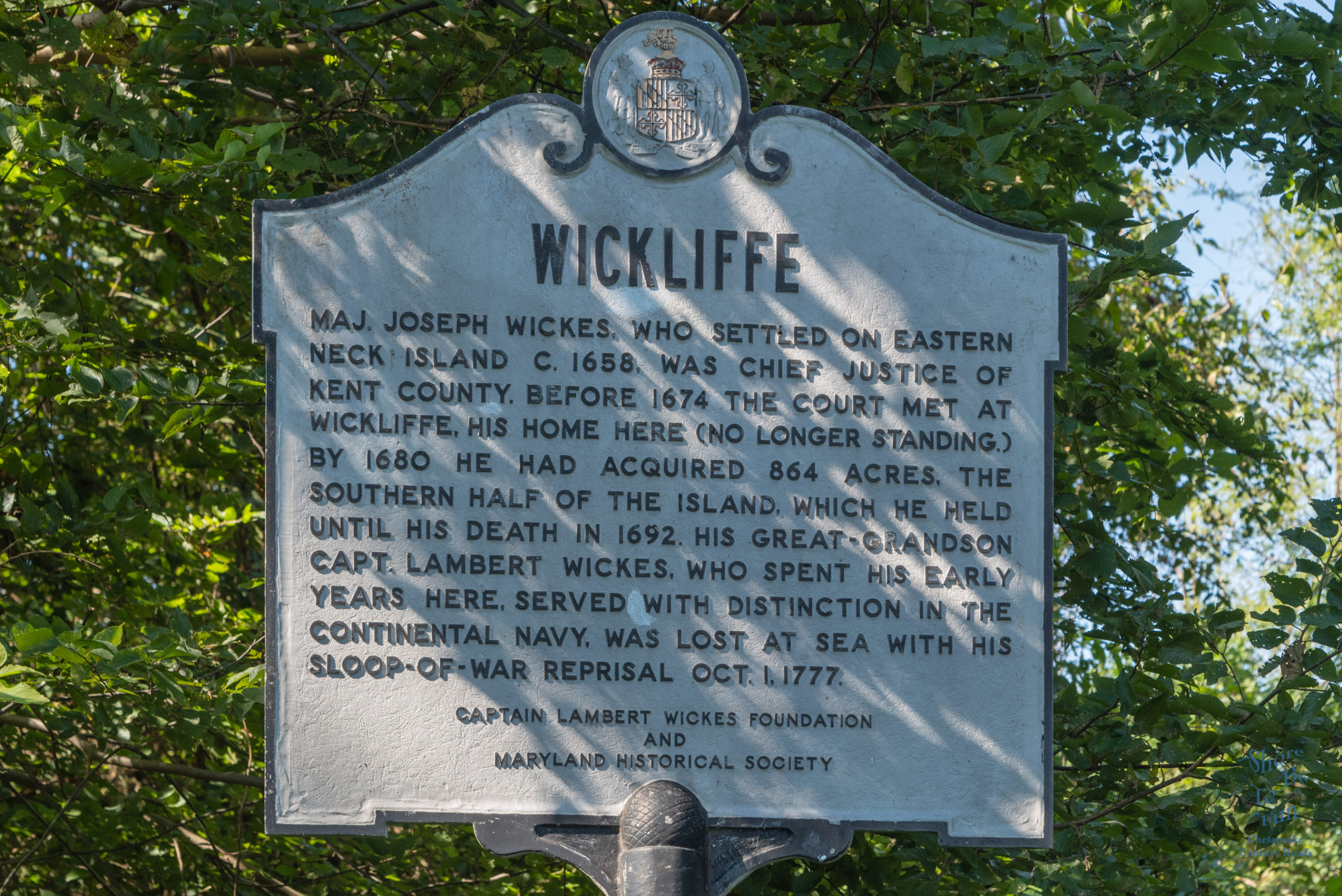

Located at the end of the road on Eastern Neck Island National Wildlife Refuge in Kent County, MD one comes to the Highway Historical Marker on the site where Wickliffe once stood.
It reads:
“Major Joseph Wickes, who settled on Eastern Neck Island c. 1658, was Chief Justice of Kent County. Before 1674 the Court met at Wickliffe, his home here (no longer standing). By 1680 he had acquired 864 acres, the southern half of the island, which he held until his death in 1692. His great-grandson Captain Lambert Wickes, who spent his early years here, served with distinction in the Continental Navy, was lost at sea with his Sloop-of-War Reprisal October 1, 1777.”
In the 1650’s the Maryland Colony was only a couple of decades old. The Island served as County Seat while Major Wickes was Chief Justice. At this time Kent County was the only Maryland County east of the Chesapeake Bay. Although by 1661 Talbot County was known to be in existence. Somerset County was created in 1666 and about this same time so was Dorchester County. In 1674 Cecil County was created out of portions of Kent and Baltimore Counties.
The Maryland Historical Trust Historic Sites Survey K-274, reports that the house was demolished in 1935.
 At this same location is a Memorial Monument for Captain Lambert Wickes. Lambert Wickes was born sometime in 1735 at the family home, Wickliffe on Eastern Neck Island. Captain Wickes is best known as the Continental Navy’s first commissioned officer in European waters with the Sloop of War Reprisal. On October 24, 1776, Wickes was ordered to France with Benjamin Franklin, who was on America’s first diplomatic mission, and his two grandsons as passengers. The United States had just declared Independence from Great Britain.
At this same location is a Memorial Monument for Captain Lambert Wickes. Lambert Wickes was born sometime in 1735 at the family home, Wickliffe on Eastern Neck Island. Captain Wickes is best known as the Continental Navy’s first commissioned officer in European waters with the Sloop of War Reprisal. On October 24, 1776, Wickes was ordered to France with Benjamin Franklin, who was on America’s first diplomatic mission, and his two grandsons as passengers. The United States had just declared Independence from Great Britain.
A year later around October 1st, the Reprisal was lost off the banks of Newfoundland in a storm.

Eastern Neck National Wildlife Refuge
1730 Eastern Neck Road
Rock Hall, MD 21661-1815
Eastern Neck National Wildlife Refuge is a 2,285 acre island providing as a sanctuary for migratory birds and was established in 1962 by the federal government as a sanctuary for migratory birds, including bald eagles and transitory peregrine falcons — and is a major staging site for tundra swans.
Along the roads in Maryland there are roadside historical markers. Hundreds on Maryland Eastern Shore. The program was launched in 1933 and is currently administered by the Maryland Historical Trust (MHT) in cooperation with the Maryland State Highway Administration (SHA).These roadside historical markers are an effective way to draw attention to the many events, people and places that have contributed to the history of Maryland and the nation.
Often we will pass these signs at a speed that makes them hard to read. I will be posting one of these Highway Historical Markers each Monday Morning. Please come by to read read them and learn a little about the remarkable people, places and events throughout the region.
Steve Atkinson



